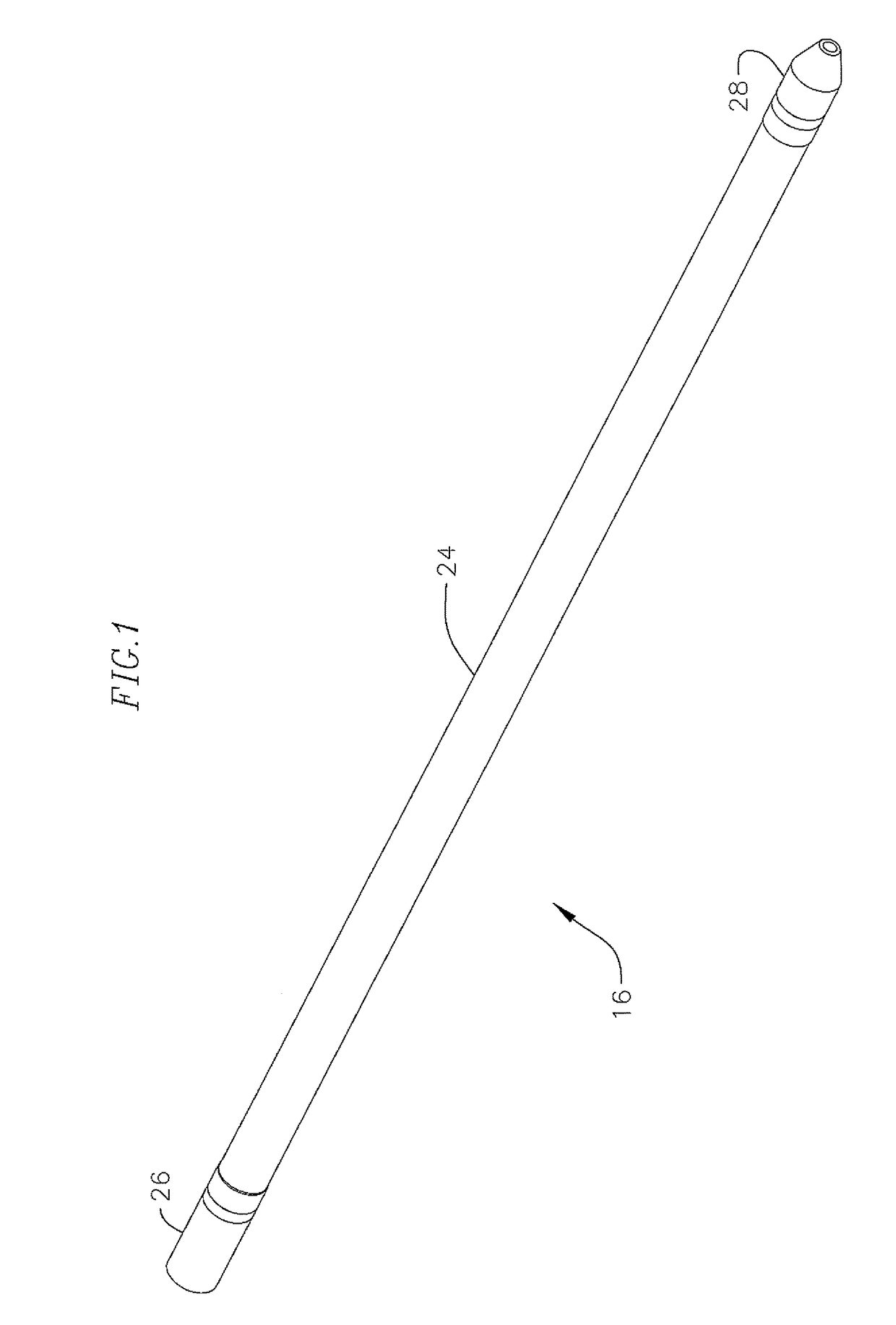Reamer shoe attachment for flexible casing shoe
a flexible casing and shoe technology, applied in the field of downhole tools, can solve the problems of tubing end being subject to wear and damage, tubing end being subject to irregularities and restrictions in the bore wall, tubing end being easy to be broken up, etc., to achieve the effect of enhancing drillability, reducing density, and facilitating breakag
- Summary
- Abstract
- Description
- Claims
- Application Information
AI Technical Summary
Benefits of technology
Problems solved by technology
Method used
Image
Examples
Embodiment Construction
[0017]Running normal wellbore casing requires a large deflection force at the leading edge and to reduce the force required to deflect the casing and allow the leading edge or shoe to follow the casing in the wellbore, a flexible casing guide 16 as shown in FIG. 1 is positioned at the leading edge of the casing. The flexible casing guide 16 requires less force to deflect and therefor follow the curve section of the wellbore. The length and stiffness of the flexible casing guide distributes the normal casing deflection force thereby reducing the risk of sticking the casing through a curved wellbore section. The flexible casing guide 16 can be a short cylindrical guide section, for example from about 20 to about 500 feet long, extending from an end of the normal casing and has a lower stiffness than the casing. The lower stiffness of the casing guide is about 5% to about 80%, and more preferably about 5% to about 25% of the stiffness of the casing. The lower stiffness of the leading c...
PUM
 Login to View More
Login to View More Abstract
Description
Claims
Application Information
 Login to View More
Login to View More - R&D
- Intellectual Property
- Life Sciences
- Materials
- Tech Scout
- Unparalleled Data Quality
- Higher Quality Content
- 60% Fewer Hallucinations
Browse by: Latest US Patents, China's latest patents, Technical Efficacy Thesaurus, Application Domain, Technology Topic, Popular Technical Reports.
© 2025 PatSnap. All rights reserved.Legal|Privacy policy|Modern Slavery Act Transparency Statement|Sitemap|About US| Contact US: help@patsnap.com



